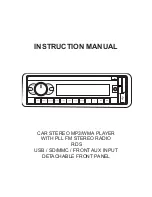
Constant background noise also obscures, or masks, low-level signals which are fre-
quently important in films. Many scenes use subtle ambient noises to set the mood
prior to an important event—without the full perception of the whispered secret or the
barely-heard creaking of a door, the impact of the following scene is diminished.
It has been demonstrated that even a relatively narrow-bandwidth noise can effectively
reduce our hearing acuity over a broad range of frequencies, far greater than the noise
itself. When you add up all the various sources of noise from electric motors, noisy
heating/cooling systems, outside noises, plus noises that even audio and video com-
ponents can introduce such as noisy transformers, motors in laser players, or projector
fan noise, our ability to discern the low-level information in the soundtrack is greatly
compromised—and the director’s intention along with it.
BACKGROUND NOISE SOLUTIONS
Many sources of noise in a home environment can be addressed simply. Locating the
home theater in the basement often removes it from many household noises as well as
isolating it from the other family members. Taking care to completely seal windows and
doors can also make a significant difference in reducing outside noise.
Heating and cooling systems are more challenging. Sometimes, the answer may be as
simple as using a “whistle-free” diffusion grille rather than one which creates undue
noise from turbulence. In cases of new construction, using larger-diameter air ducts for
lower air velocity is very beneficial. You can go further by using ductwork which is lined
with acoustically-absorptive material. Where possible, longer ducts which have several
turns further reduce the sound of the airflow, by eliminating the straight path from the
heating/cooling system to the room.
Some of the construction techniques used to minimize the transmission of external
sounds into the listening environment include:
• Double or triple layers of sheet rock (gypsum board)
• Double wall construction, meaning two complete sets of studs (preferably stuffed with
fiberglass insulation)
• Double wall construction with staggered studs (minimizes transmission of vibrations
from one set of studs to the next)
• Floating floor construction (again, preferably stuffed with fiberglass; this also can
enhance the perceived bass, since the subwoofers may cause structural vibrations
through the false floor which then get transmitted up through furniture)
13
Содержание SYN 3
Страница 2: ...SYNTHESIS THREE SPEAKERS OWNER S MANUAL...
Страница 20: ......






































